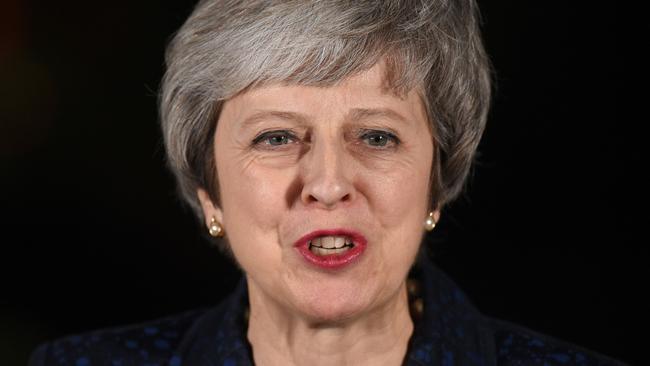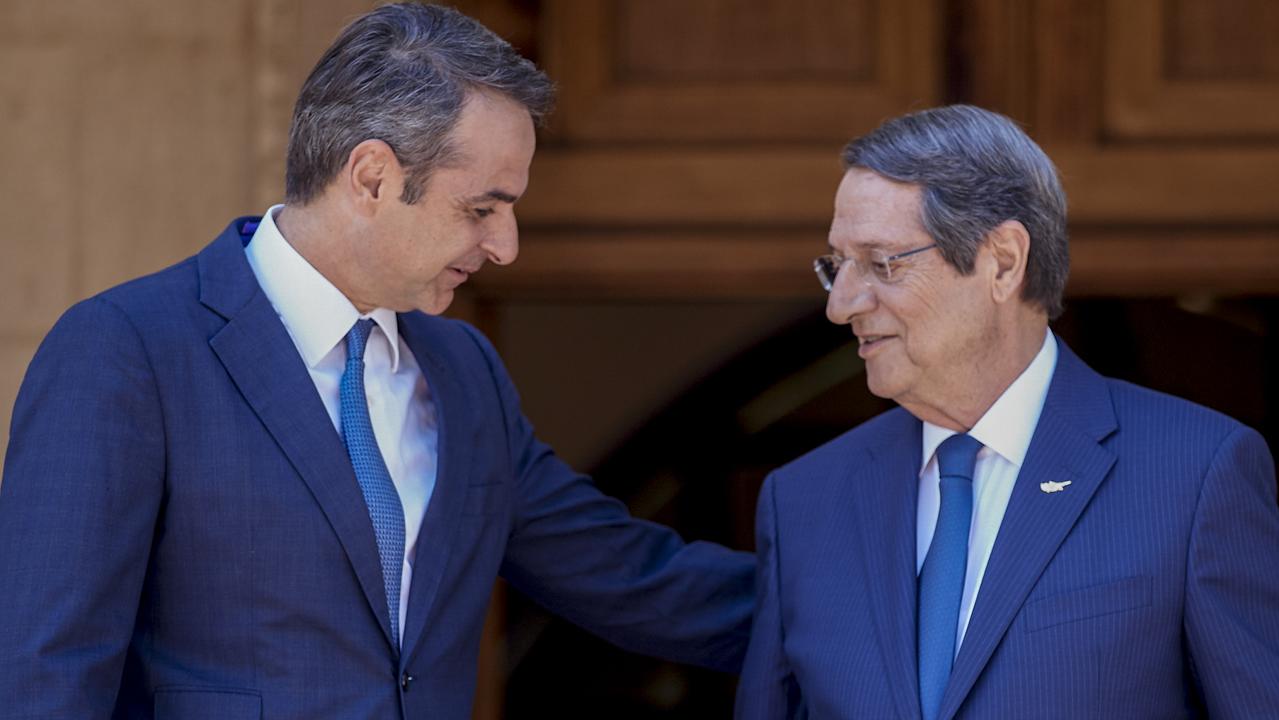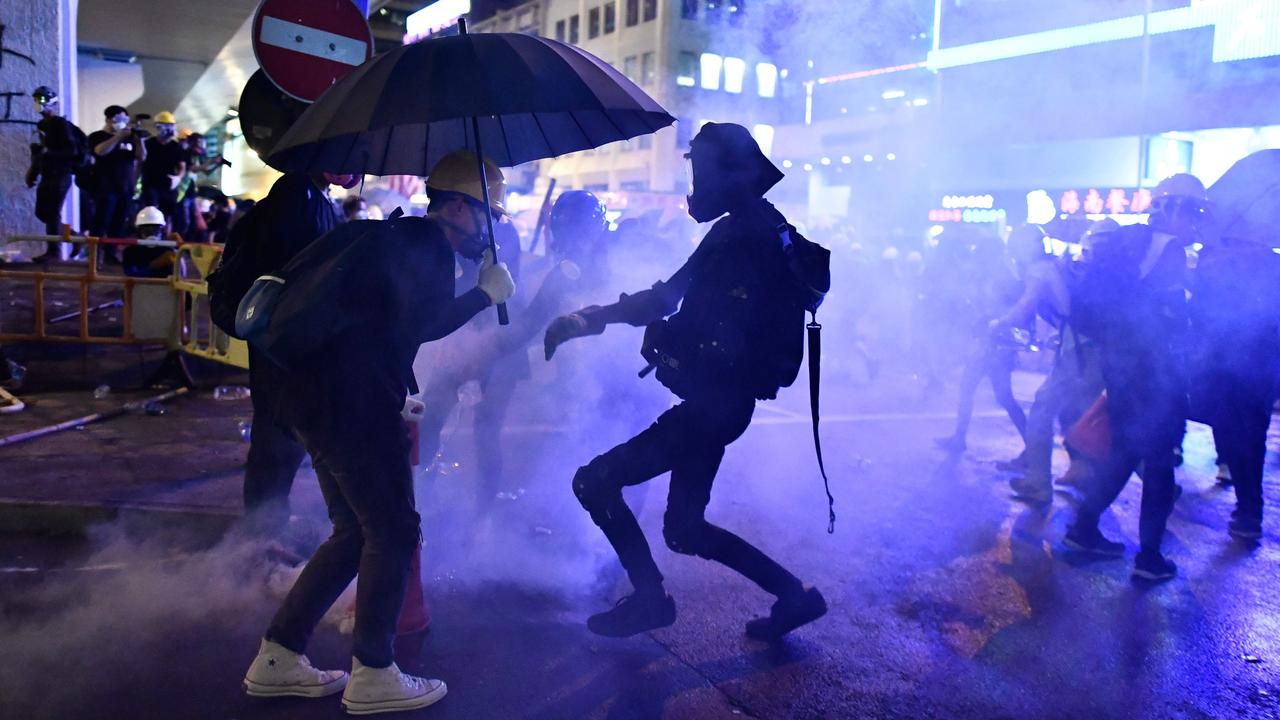Pressure of time might be the Prime Minister’s only real friend

The rumours of a leadership challenge to Theresa May were so long-standing that the event itself was something of an anti-climax. On Wednesday morning in London, the chairman of the Conservative Party’s 1922 committee of backbenchers, Graham Brady, set off a day of feverish speculation by announcing he had received the 48 letters from Tory MPs needed to hold a confidence vote in the leader. After a rambunctious prime minister’s question time and a raucous and often emotional meeting of the 1922 committee, the vote was held that evening.
Mrs May won by 200 votes to 117, a clear margin but not a large one. Under the party’s rules she cannot be challenged for another 12 months. But to shore up support ahead of the vote, the Prime Minister felt compelled to promise her MPs that she would not lead the Tories into the next election, due in 2022.
The vote was triggered by disgruntled hardline Tory Brexiteers bitterly opposed to the Brexit deal Mrs May has negotiated with the EU. This deal was due to be voted on by the Commons on Tuesday. But faced with the prospect of defeat by over 100 votes, the government pulled it at the last minute. As a habitual procrastinator, Mrs May refuses to say when the vote will take place, but ministers have promised it will be before January 21.
Surviving the leadership challenge may help Mrs May a little, and losing it may weaken the hardline Brexiteers. Deferring the vote has also bought her some time. But her win was not big enough to give her much of a boost, let alone to silence her critics, some of whom argued that with 117 votes against her she should resign.
And her whistlestop tour of European capitals to persuade fellow EU leaders to change the Brexit deal to make it more palatable at home is not succeeding. She has been firmly told that, although words may be added to the political declaration about future relations, there is no chance of amending the legally binding withdrawal agreement that fixes the principal terms for Brexit.
This matters, because the main target of the ferocious attacks on Mrs May’s deal is the so-called Irish backstop, an insurance policy to avert a hard border between Northern Ireland and the republic in all circumstances, which is part of the withdrawal agreement. The backstop would keep Britain in a customs union with the EU and align Northern Ireland with most EU single-market rules. Because it is an insurance policy, Britain cannot have a unilateral right of exit.
Mrs May’s critics want her either to junk the backstop or to amend it to give Britain the power to leave when it chooses. She has promised merely to seek reassurances from her EU colleagues that the backstop is not intended to be used, and is seen by all as temporary. Such reassurances might even be given the force of a formal European Council decision. But that is far short of a change to the legally binding withdrawal treaty.
Does she have an alternative? Some MPs want Mrs May to switch to a Brexit deal similar to Norway’s, which means staying in the single market and adding a permanent customs union. But it also implies keeping free movement of people, which Mrs May’s deal does not. Moreover, as she points out, any Brexit deal has to have an Irish backstop. And there is no sign of a Norway-like deal (or the more distant Canada-like free-trade deal promoted by the hardliners) winning a majority among MPs. Sarah Wollaston, a pro-European Tory, concludes that there is total parliamentary gridlock over any form of Brexit.
So what might the Prime Minister do? Her answer is to rely on the pressure of time. Brexit is due to happen, according to the two-year deadline set by Article 50 of the EU treaty, on March 29 next year. If no agreement is reached before then, Britain could leave without a deal. A majority of MPs think this would be a catastrophically bad outcome. If Mrs May can convince them that the choice is her deal or no deal, she might win a few more over. She can also point to the threat that Brexit chaos could produce a Labour government led by the far-left Jeremy Corbyn as another reason for Tory MPs to back her deal.
Yet none of this looks likely to work. Although the risk of a no-deal Brexit is rising, moderate MPs on both sides believe a way could be found of preventing it. And far from this being the only alternative to Mrs May’s deal, many prefer another option that she cited several times this week: no Brexit. That the European Court of Justice chose this week to confirm a preliminary ruling that Britain can unilaterally withdraw its Article 50 request at any time shows that there is another way out.
Although time is tight, the Prime Minister knows she may need more than one go at getting her deal through. The position of Labour will be important. Mrs May’s efforts to lure a few pro-European Labour MPs to back her deal have not worked.
Mr Corbyn wants to defeat it in hopes of securing a general election. He is under pressure from his MPs to table a motion of no confidence in the government to help bring this about. But Mrs May would probably win, just as she won the party confidence vote this week, because neither Tory MPs nor her Northern Irish Democratic Unionist allies, for all that they hate her Brexit deal, want an early election.
The absence of obvious alternatives explains growing talk in Westminster about putting the Brexit decision back to the people in a fresh referendum. This idea is favoured, naturally, by those hoping for no Brexit. But some MPs have also begun to suggest a referendum as the only way to break the parliamentary gridlock. Indeed, a few Tories argue that Mrs May herself should resort to a referendum, giving voters a choice between her deal, as the best form of Brexit now available, and cancelling Brexit altogether. Holding such a referendum would require an extension of the Article 50 deadline, but the EU is likely to agree to this. Mrs May might even win a popular vote for her deal.
The truth is that there are few good places for her to go on Brexit. She was foolish to lay down the red lines of leaving the single market and customs union, ending free movement of people and escaping the ECJ. The Irish border was always going to make it hard to break fully with EU rules. Moreover, business was always going to press for the maximum continuity possible, especially of supply chains that are spread right across the EU.
Mrs May is now in the position of selling a deal that shifts away from her red lines in order to make necessary trade-offs. But, as became clear in last year’s election and again this week, she is a rotten saleswoman. She may have just seen off one attempt to get rid of her. But her days at the top are clearly numbered.
The Economist


